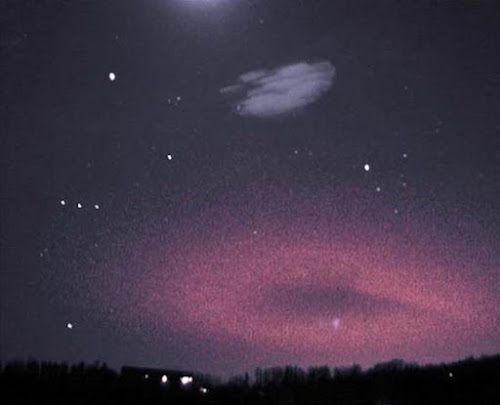Lightning, in general, is an electrical discharge caused by positive and negative imbalances within clouds themselves, or between storm clouds and the ground. Lightning may flash on Earth about 100 times per second.
Do you know that a lightning flash can warm the air five times more than the surface of the sun's, The heat causes the surrounding air to rapidly expand and vibrate, which creates thunder.
Some types of lightning are also deadlier than others. Here are some of the rarest, weirdest, and scariest forms of lightning out there.
1. Ball Lightning
 |
| Ball Lightning |
Ball lightning, which is a type of lightning.ball lightning is an unexplicated mysterious atmospheric phenomenon which has been a topic of mystery for centuries. This strange phenomenon is also known as Globe lightning, it usually appears in the form of a temporary field during thunderstorms, which it blue, orange, yellow-color and, this event occurs for ten seconds and then disappears.
It is sometimes accompanied by a hinging sound and acute dirt.
It is sometimes accompanied by a hinging sound and acute dirt.
But is it possible that one ball of light can appear in the sky? for the past few decades, there was no evidence near the scientists.
But in 2012, ball lightning was first captured in the camera and since then it actual reason there are many theories as follows;
The latest comes in a new paper published in the journal Optik, which says that the spherical shell is full of highly compressed air, which makes white light rotate in all directions like a ball rolling around in the sky. The researchers noted that the intensity of this rare lightning is almost a billion times greater than the lightning that moves in a straight line.
The latest comes in a new paper published in the journal Optik, which says that the spherical shell is full of highly compressed air, which makes white light rotate in all directions like a ball rolling around in the sky. The researchers noted that the intensity of this rare lightning is almost a billion times greater than the lightning that moves in a straight line.
Can "Ball-Lightning" be created artificially? They have tried for a very long time to do that.
“While some experiments have produced effects that are visually similar to reports of natural ball lightning, it has not yet been determined whether there is any relation. “
We haven't created pure electricity ball lighting that nobody could deny, and that they could reproduce with their own equipment.
2. Sprites Lightning
Sprites Lightning |
Sprite lightning is also a type of lightning, it is often found in shiny red-orange color, so we call it red sprite, which is a large-scale electrical discharge, which occurs by thunder. They often occur in clusters above the troposphere at an altitude range of 50–90 kilometers (31–56 miles).
It was first photographed on July 6, 1990, at the University of Minnesota by the scientists and have subsequently been captured in video recordings many thousands of times.
Sprites are sometimes inaccurately called upper-atmospheric lightning. However, sprites are cold plasma phenomena that lack the hot channel temperatures of tropospheric lightning, so they are more akin to fluorescent plasma discharges than to lightning discharges. Sprites are associated with various other upper-atmospheric optical phenomena including Blue Jets Red Sprites and ELVES.
3. Elves Lightning
 |
| Elves Lightning |
Like sprites, elves are also reddish, they occur when the ultra-fast bursts of electricity bright enough to see during the daytime high in the Earth's atmosphere. But elves are ring-shaped halos that can spread to more than 185 miles (300 kilometers) wide. Scientists who first captured images of elves and sprites dancing above thunderstorms in the late '80s and early '90s.Both elves and sprites get their mythical names from one researcher: meteorologist Walt Lyons.
4. Dark Lightning
 |
| Dark Lightning |
More than a decade agone, scientists unexpectedly discovered thunderstorms might generate temporary however powerful bursts of gamma rays, the highest-energy kind of lightweight. These supposed terrestrial gamma-ray flashes are therefore bright that they're ready to blind sensors on satellites several many miles away, and might truly produce matter(particles that have properties opposite traditional particles).
Now researchers recommend the flashes are caused by Associate in Nursing extreme kind of lightning referred to as "dark lightning, " since it generates little or no light. traditional lighting involves slow electrons — in distinction, dark lightning involves high-energy electrons.
These electrons crash into air molecules, manufacturing gamma rays. These gamma rays then generate electrons and their matter counterparts, referred to as positrons. These high-energy particles than collide into still additional air molecules, generating additional gamma rays.-
These terrestrial gamma rays flashes, or TGFs, are among the highest-energy light that naturally occurs on Earth, according to NASA. They're so powerful that they can blind satellite sensors hundreds of miles away.
5. Positive Lightning
 |
| Positive Lightning |
Scientists are still debating the details of this process, but here's the leading theory: Thunderclouds are filled with tiny bits of ice that collide and knock away each other's electrons. Some ice particles lose electrons, and others gain them — the former gain a positive charge, the latter a negative one. The positive particles then tend to gather toward the top of the cloud, and the negative ones gather at the bottom. What happens next is literally a giant burst of static electricity, just like the stuff that sparks from your fingers on a dry, cold day. As the charge grows larger on both sides, an exchange of energy is inevitable.
positive
Most of the time, that lightning stays between the upper and lower parts of the cloud. But the lightning you see when a storm rolls through blasts its electrons towards the ground instead, as the negatively charged water particles toward the bottom of the cloud interact with the earth.
lightning
By contrast, positive lightning happens because of that positive charge that builds up at the top of the cloud. Because an ordinary storm cloud keeps negatively charged particles between the positively charged particles and the ground, positive lightning doesn't usually happen unless there's a strong wind to move the negative charge out of the way, or once most of the storm has cleared. In this case, the electrons have a much greater distance to travel. When they do, watch out! A negative bolt produces about 300 million volts and 30,000 amps of electricity — a positive one produces about a billion volts and 300,000 amps.
Even though fatal lightning strikes are relatively rare and positive lightning makes up only five percent of all lightning strikes, positive lightning is a lot more deadly than negative lightning. It isn't just raw power that sets positive lightning bolts apart. They're also a lot longer than their negative cousins. Positive lightning can strike up to 20 or 30 miles (32 to 48 kilometers) away from their storm, and generally happen as the worst is dying down. You might never expect it.
Just remember, the next time it seems like the storm has passed you by, you might want to wait it out a bit before you leave your safe haven.
- Only five percent of lightning.
- Flash duration is longer.
- Ten times powerful than negative charged light lightning.
- As much as 1 billion voltage.
- Can strike 25 miles away from the storm.





0 Comments